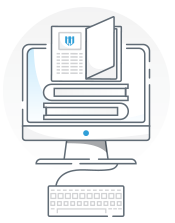Investors love the self-directed, or solo 401(k)—or what the IRS calls a one-participant 401(k)—because it’s perfect for businesses with sole owners. These retirement plans offer serious benefits. These are like self-directed IRAs made just for investors and the self-employed.
This may seem like a dream come true, but when you’re busy investing or running a business, the management of a 401k can get overlooked. Mistakes can be costly. Making sure your plan is compliant comes down to five easy steps.
Updates are required by the IRS every six years. If you don’t update them, you’ll face costly fines and possibly even plan termination. Just like your phone, if it’s out of date, you are vulnerable to all kinds of attacks. Fortunately this one is straightforward. If your plan is out of date, get it updated.
Your income sources must be accounted for. My friend’s wife used to make contributions to one of his accounts, but he tracks everything to the letter. Make a spreadsheet in Excel. Those night classes you took are good for something and excel feels is feeling so neglected.
If two people are contributing to one account, make sure they contribute from their own accounts. Also keep Roth accounts in their own space separate from traditional funds. By now, you’re more organized than the foreman at an ant farm, and you have to be. There is a lot to keep track of.
Yes, another form. I often wish I’d gone to art school, but then I remember that artists fill out less forms because they have no money.
There are two situations that demand a 5500 for your individual 401k. First, if you have more than $250,000, start stretching your writing hand. Second, if you terminate a plan, regardless of assets, you need to file a 5500. You have to do this annually, so make sure you have enough money in the plan to make it worth it.
You can opt for a 5500-EZ. This is, as you might suspect, an easy file version of a 5500. This has to be filed by mail. If you opt for a 5500-SF you can do it online through the Department of Labor. This is obviously more convenient.
Online filing can be tracked immediately. The SF skips portions of the 5500 like an EZ. Opt for the SF and get the best of both worlds if you qualify for EZ filing.
*See Form 5500 EZ Filing Requirements For Solo (One Participant) 401(k) Holders for more information.
If you make contributions or roll over funds from an IRA or 401k into your individual 401k, you need to state that the rollover is coming from another retirement account. The company rolling over the funds will issue a 109d9-R to you. It states that the source of the roll over so you don’t get taxed on it. Unless you like paying tax. If that’s the case, you’re on the wrong website.
If you are making new contributions to an individual 410k, track them on personal and business tax returns. If you’re an s-corp, employee contributions show up on your W-2 and your employer contributions will show up on your 1120S s-corp return, unless you are the sole proprietor, in which case your contributions show up on your personal 1040 on line 28.
Head spinning yet? Yes, this portion of tax law is confusing. You may be better off with a professional, but if you can make sense of it, you will save yourself a lot of money.
In short, be updated and organized to keep your enemies at the IRS from sticking you with non-compliance. If you suspect you are out of compliance, meet with your attorney or CPA and get that treated before it is malignant.
To give you a sense of what is at stake, the penalty for not properly filing a 5500 is $25.00 a day to a maximum of $15,000.00 on your return. A mistake made on a filed return might keep you from retiring at all. See to the boring stuff. Get your paperwork done. Be up to date. The rewards are worth it.
As always, if you're struggling to manage your retirement plan, get professional help. Royal Legal Solutions has experts and attorneys who can help you decide which of the many retirement options is best for you.

Scott Royal Smith is an asset protection attorney and long-time real estate investor. He's on a mission to help fellow investors free their time, protect their assets, and create lasting wealth.

Ready to know more than your attorney? Join our community platform where you'll get immediate FREE access to all our best educational resources for real estate investors. Including 8 Masterclasses, group mentoring replays, and much, much more.
Join thousands of real estate investors in all 50 states as they enjoy exclusive content, special promotions, and behind-the-scenes access to me and my guests. No spam, ever. Just great stuff!
